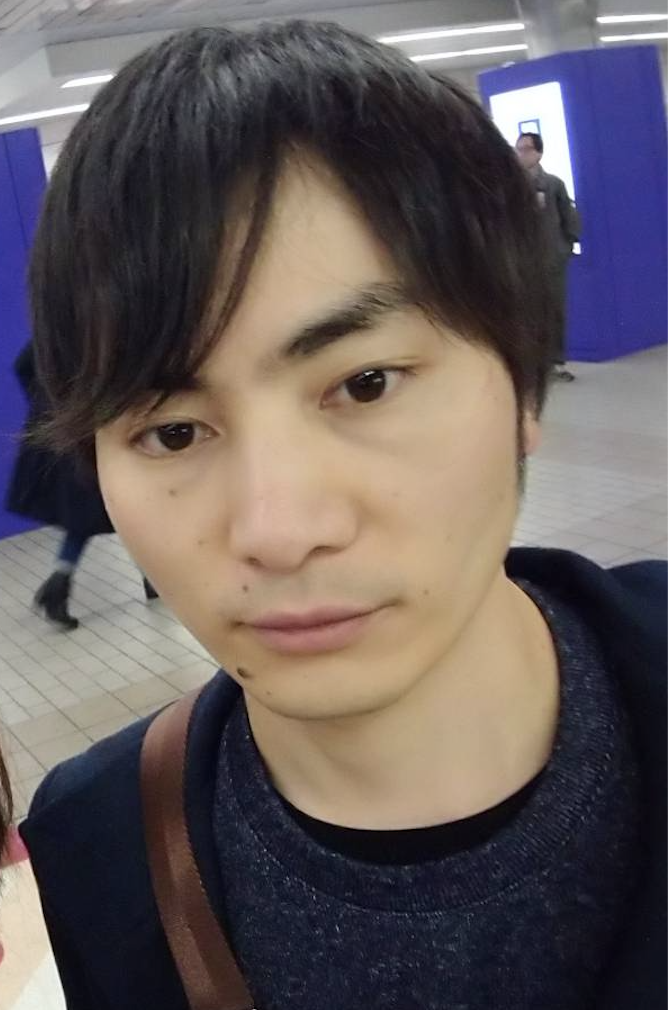メンバー
堂浦 智裕

学歴
- 2007年3月|大阪府立大学工学部機能物質科学科 卒業
- 2009年3月|大阪大学大学院理学研究科化学専攻修士課程 修了
- 2012年3月|九州大学大学院工学府物質創造工学専攻博士後期課程 修了
職歴
- 2012年4月|東京大学大学院医学系研究科 特任研究員
- 2014年7月|千葉大学大学院薬学研究院 特任助教
- 2016年4月|東京大学大学院医学系研究科 特任研究員
- 2016年10月|山口大学大学院医学系研究科 助教
- 2018年7月|東京薬科大学薬学部 嘱託助教
- 2019年6月|名古屋大学大学院工学研究科 特任助教
- 2020年10月|名古屋大学大学院工学研究科 助教
- 2025年7月|名古屋大学大学院工学研究科 講師
現在に至る
原著論文
- Ueda Y., Kiyonaka S., Selfors L. M., Inoue K., Harada H., Doura T., Onuma K., Uchiyama M., Kurogi R., Yamada Y., Sun J. H., Sakaguchi R., Tado Y., Omatsu H., Suzuki H., Aoun M., Nakayama T., Kajimoto T., Yano T., Holmdahl R., Hamachi I., Inoue M., Mori Y., Takahashi N. Intratumour oxidative hotspots provide a niche for cancer cell dissemination. Nat. Cell Biol. 27, 530–543 (2025). DOI: 10.1038/s41556-025-01617-w
- Suzuki H., Doura T., Matsuba Y., Matsuoka Y., Araya T., Asada H., Iwata S., Kiyonaka S. Photoresponsive adenosine derivatives for the optical control of adenosine A2A receptor in living cells. ACS Chem Biol. 19, 2494-2501 (2024). DOI: 10.1021/acschembio.4c00583
- Araya T., Matsuba Y., Suzuki H., Doura T., Nuemket N., Nango E., Yamamoto M., Im D., Asada H., Kiyonaka S., Iwata S.. Crystal Structure Reveals the Binding Mode and Selectivity of a Photoswitchable Ligand for the Adenosine A2A Receptor. Biochem. Biophys. Res. Commun. 695, 149393 (2024) DOI: 10.1016/j.bbrc.2023.149393
- Ojima K., Kakegawa W., Yamasaki T., Miura Y., Itoh M., Michibata Y., Kubota R., Doura T., Miura E., Nonaka H., Mizuno S., Takahashi S., Yuzaki M., Hamachi I., Kiyonaka S. Coordination chemogenetics for activation of GPCR-type glutamate receptors in brain tissue. Nat. Commun.,13, 3167 (2022). DOI: 10.1038/s41467-022-30828-0
- Miura Y., Senoo A., Doura T., Kiyonaka S. Chemogenetics of cell surface receptors: beyond genetic and pharmacological approaches.RSC Chem. Biol.,3, 269-287 (2022). DOI: 10.1039/d1cb00195g
- Senoo A., Yamada Y., Ojima K., Doura T., Hamachi I., Kiyonaka S. Orthogonal activation of metabotropic glutamate receptor using coordination chemogenetics. Front. Chem. 9, 825669 (2022). DOI: 10.3389/fchem.2021.825669
- Tsai Y.H., Doura T., Kiyonaka S. Tethering-based chemogenetic approaches for the modulation of protein function in live cells. Chem. Soc. Rev. 50,7909-7923 (2021). DOI: 10.1039/d1cs00059d
- Ojima K., Shiraiwa K., Soga K., Doura T., Takato M., Komatsu K., Yuzaki M., Hamachi I., Kiyonaka S. (2021) Ligand-directed two-step labeling to quantify neuronal glutamate receptor trafficking. Nature Commun. 12, 831
- Aoyama H., Doura T. (2020) Selective acetylcholinesterase inhibitors derived from muscle relaxant dantrolene. Bioorg. Med. Chem. Lett. 30, 126888
- Doura T., Nishio T., Tamanoi F., and Nakamura M. (2019) Relationship between the glutathione-responsive degradability of thiol-organosilica nanoparticles and the chemical structures. J. Mater. Res. 34, 1266-1278
- Mekaru H., Yoshigoe A., Nakamura M., Doura T., and Tamanoi F. (2019) Biodegradability of disulfide-organosilica nanoparticles evaluated by soft X-ray photoelectron spectroscopy: cancer therapy implications. ACS Appl. Nano Mater. 2, 479-488
- Doura T., Tamanoi F., and Nakamura M. (2018) Miniaturization of thiol-organosilica nanoparticles induced by an anionic surfactant. J. Colloid Interface Sci. 526, 51-62
- Moriizumi Y., Tabata K. V., Watanabe R., Doura T., Kamiya M., Urano Y., and Noji H. (2018) Hybrid cell reactor system from Escherichia coli protoplast cells and arrayed lipid bilayer chamber device. Sci. Rep. 8, 11757
- Doura T., Takahashi K., Ogura Y., and Suzuki N. (2017) Combretastatin A4-b-galactosyl conjugates for ovarian cancer prodrug monotherapy. ACS Med. Chem. Lett. 8, 211-214
- Doura T., Kamiya M., Obata F., Yamaguchi Y., Hiyama T. Y., Matsuda M., Fukamizu A., Noda M., Miura M., and Urano Y. (2016) Detection of lacZ-positive cells in living tissue with single-cell resolution. Angew. Chem. Int. Ed. 55, 9620-9624
- Doura T., Yamada M., Teranishi R., Yamamoto Y., Sugimoto T., Yuba E., Harada A., and Kono K. (2015) PAMAM dendron lipid assemblies that undergo structural transition in response to weakly acidic pH and their cytoplasmic delivery capability. Langmuir 31, 5105-5114
- Nonaka H., An Q., Sugihara F., Doura T., Tsuchiya A., Yoshioka Y., and Sando S. (2015) Phenylboronic acid-based 19F MRI probe for the detection and imaging of hydrogen peroxide utilizing its large chemical-shift change. Anal. Sci. 31, 331-335
- Doura T., Hata R., Nonaka H., Sugihara F., Yoshioka Y., and Sando S. (2013) An adhesive 19F MRI chemical probe allows signal off-to-on-type molecular sensing in a biological environment. Chem. Commun. 49, 11421-11423
- Nonaka H., Hata R., Doura T., Nishihara T., Kumagai K., Akakabe M., Tsuda M., Ichikawa K., and Sando S. (2013) A platform for designing hyperpolarized magnetic resonance chemical probes. Nat. Commun. 4, 2411
- Doura T., Hata R., Nonaka H., Ichikawa K., and Sando S. (2012) Design of a 13C magnetic resonance probe using a deuterated methoxy group as a long-lived hyperpolarization unit. Angew. Chem. Int. Ed. 51, 10114-10117
- Doura T., Nonaka H., and Sando S. (2012) Atom arrangement strategy for designing a turn-on 1H magnetic resonance probe: a dual activatable probe for multimodal detection of hypochlorite. Chem. Commun. 48, 1565-1567
- Doura T., An Q., Sugihara T., Matsuda T., and Sando S. (2011) p-Aminophenyl alkyl ether-based 19F MRI probe for specific detection and imaging of hypochlorite ion. Chem. Lett. 40, 1357-1359
総説・解説等
- 原 隆史, 堂浦 智裕, 清中 茂樹, 動的構造情報に基づく受容体タンパク質活性制御法の開発, 生体の科学, 75, 269-274 (2024) https://doi.org/10.11477/mf.2425201865
- 堂浦智裕、神谷真子、浦野泰照 (2016) クローズアップ実験法:生体組織中のlacZ発現細胞のライブ蛍光検出 実験医学12月号 Vol. 34, No. 19, 3197-3201
研究分野
ケミカルバイオロジー、ケミカルジェネティクス、メディシナルケミストリー
- Gタンパク質共役型受容体(GPCR)を対象とした化学遺伝学研究
GPCRは細胞外からの刺激を細胞内へ伝えるGタンパク質シグナルやアレスチンシグナルの最上流に位置し、様々な細胞応答の制御に関わっている。また、同じGPCRでも発現する細胞が異なると生理学的機能が異なる。そのため、細胞別のGPCRの機能解明のための化学遺伝学的な方法論の開発に取り組んでいる。